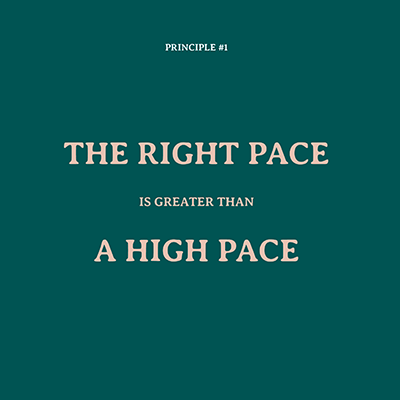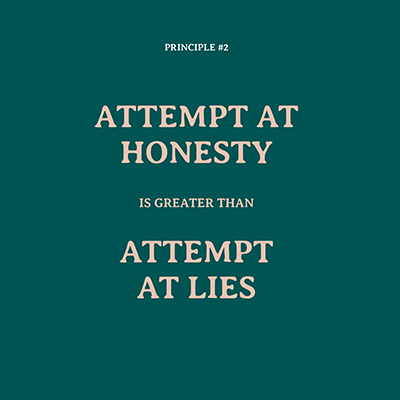Welcome to the Slow Internet portal.

This is a place where people and ideas about how to build more pleasant virtual realities gather. Here, we go back to the basics of the promises of the early Internet and combine it with the knowledge of three decades of real-world experiences, from thrills and convenience to overwhelm and exploitation. The goal is to ignite a movement that embraces what adds actual value to our lives and abandons what doesn’t.
Below you’ll find the texts that are in the physical book, and a table of contents of navigate them smoothly.
This portal also has pages where you can read more about some of the inspiration behind Slow Internet, check out a growing list of adoptions of its principles, and sign up for our analogue and digital newsletter.
If you would like to help grow the Slow Internet movement, we have put together some ways you can contribute.
You can buy physical copies of the Slow Internet book from our preferred online bookstores.
If you’re on a mobile device, scroll away. If you’re on a bigger screen, you might want to decide what window size fits your reading preferences. Maybe adjust the text size, too – the setting is usually in the top right browser menu. Whatever you do, do it at a pace you like.
Slow Internet
Principles and Examples
by Corin Ism & Markus Amalthea Magnuson

The Internet. How can something we love and need so much also feel like such a burden? How did this remarkable invention, with its exciting promise of reduced distances and enabled leisure, turn into something that so often leaves us drained and overwhelmed?
Some 30 years since its wide adoption, these are not rhetorical questions. At this point, human beings have the data, the lived experience, and stellar articulations from leading scholars who’ve been doing the forensics of this promise lost. We know that the offer of an interconnected humanity morphed into a surveillance apparatus, where our intimate thoughts and feelings are habitually tracked, recorded and used against us – all in service of short-term profit, geopolitical gains and, all in all, other interests than the common good.
That knowledge is a great starting point as we embark on the journey to reclaim the wasted opportunity of our world wide web.
That it’s high time for this journey is evident to anyone following the digital developments, with imminent launches of highly capable AI, versatile robotics, and ephemeral devices, set to make our connected virtuality even more of a constant, decreasing any space to escape, or even pause, our virtual presence. The remaining third of the global population that still lacks connectivity is predicted to come online in the coming decade. Thus, our digital worlds are rapidly becoming our only worlds. Hence why designing those worlds with humans’ best interests in mind matters so deeply and requires such urgent actions.
Until very recently, this understanding has been rare among policymakers. As the virtual worlds consist mainly of companies that freely offer their value propositions, it’s been possible to argue that a person can always leave one virtual terrain and switch to another that, due to market forces, someone else is bound to offer. Anyone who knows anything about being on the Internet today will be well aware such ease of choice is only available in theory. In reality, the small number of companies dominating the virtual territory are close to inescapable constants in our lives, where leaving them is associated with significant inconvenience and high social and economic costs. Network effects and monopolistic practices have turned tech companies into geopolitical powerhouses, often comparable to states.
Moving from merely criticising this, to actively constructing and adapting more affable alternatives, requires three things.
First, we need an aesthetic vision. An idea of how it should feel and what it should look like, to be in a virtual future that people at large would actually and deeply enjoy. It’s here artists of every kind, whether aided by algorithms or not, have such a crucial role to play. We’ve seen enough dystopias – we need eutopias, realistic images of better states of being online creatures. We need to make more pleasurable worlds compelling and palpable. We need to get ourselves some hope.
Second, we need a definition of what a better reality would be. On a high level, that definition comes easy. We can jointly recognise that virtual worlds should be built to serve humanity as a whole rather than a small group of investors. We can agree our dematerialised realities ought to be spaces where sentient beings are helped rather than hurt, empancitated rather than exploited, and where the worlds are coded to reflect and respect a rich diversity of people and interests. Just like a city can be designed with the inhabitants’ well-being as the main objective, our virtual worlds should be places where it feels good and benefits us to be. A far cry from how people feel about the time they spend doomscrolling today.
Last, we need a path that starts here and now. Concrete steps for how we can move to get the kind of virtuality we deserve. Principles that users and developers – be it of businesses, designs, code or legislation – can use today to bring an improved virtual reality about.
In this text, we take a stab at all three parts. We provide concrete design principles, examples to make their implementation more tangible, and a list of actions you can take today to change the norms around our relationship with the technology surrounding us. It’s a lot to squeeze into what ultimately is designed as a picture book for grown-ups who are likely to have had their attention span too shattered to get through any longer reads. That’s not to say longer books and plenty of expansions aren’t needed. A lot is needed, and a lot has already been written and otherwise created. From the relentless fight for privacy, spearheaded by organisations like the EFF, movements like platform cooperativism, and innovations like the Fediverse, to tireless legislators attempting to get the same ideals that have already been reflected in laws for physical territories to also be implemented in virtual domains. On the whole, so many people have been out in the dematerialised streets, trying to bring better virtuality about. Our attempt here is to synthesise, consolidate and build upon some of what the resisting and recreating movements have been up to, hopefully presenting it in a way that highlights that it really is fun to build. It’s fun to create things that make people, oneself included, feel good. We, the authors, one governance futurist and one altruistic hacker, have as the utmost goal of this text to help empower more people to both build and protest. To take that general critique of “social media” and rearticulate it into concrete requests and blueprints for what you would prefer instead.
When the gist of the design principles, examples and underpinning philosophy we present here are merged and put to use, an enjoyable alternative to the exploitative Stressed Internet of today emerges.
It is this we call Slow Internet.
Principle #1

Many digital services are marketed with the promise of speed. But as anyone who has ever had a favourite song will know, speeding it up does not automatically make it better.
For some things – particularly those that are burdensome and boring – faster execution can bring relief. But when it feels like the world as a whole has been sped up, it’s not pleasurable or useful in itself.
Every time we manage to “save time”, it also raises the question: what is that saved time supposed to be used for? Did you free yourself from having to go to the physical post office – by buying stamps online – only to scroll away the saved time on content that didn’t spark joy? If so, was the time really saved, or was it lost?
These themes of deliberately spent time and goal-focused pacing are explored in the already established slow movement – which encompasses things like slow food, slow cinema, and slow cities. It’s high time to also apply this approach to our online lives.
No longer can we let faster equal better – it simply isn’t always so.
Principle #2

Lying to your friends, fans, or customers is a hard-earned taboo and a bedrock norm needed for our offline civilisation to function. Although scams have been a thing since long before there were virtual worlds, on the Internet, norms around promising what you have no intention to deliver have grown exceptionally permissive. Whether in the form of clickbait, purposefully addictive design, fake news bots, junk fees or the practice of deliberately trapping users in treacherous agreements, fooling people has become a common standard for interacting online.
Having honesty reinstated as the baseline comes down to the very same thing that’s always required to change a norm: that a critical mass of people call out a certain practice as unacceptable.
There are plenty of business models where the transaction is fair – you supply something people demand and market it by letting people know about your offering. At the core of any person or business that turns to dishonesty lies the belief that the actual value they’re putting on the table won’t be satisfactory enough.
Significant time and effort are currently directed towards ideating more effective ways to trick customers – be it into bleeding data, committing to unclear agreements or buying products by mistake. Would that brainpower be spent on creating and improving products with actual value, the need to turn to lies to turn a profit would decrease.
A simple rule of thumb here is transparency: if the people using a site or service would be upset to learn how its originator makes their money, the operation is undeserving of its users.
Principle #3

Internet trends come and go. For those in the startup scene, this is a farcical game where buzzwords are replaced in fast succession. One day your pitch deck better mention “Web3”; the next, it must proclaim your proximity to generative AI. For those looking to grow investments quickly and regardless of the actual value, brief clout can be a relevant metric. But for anyone who wants to contribute to and live in solid virtual and physical worlds, it’s urgent to break up with the absurdity of hype-based operations.
Whether a particular visual interface, technology, or business model is or isn’t trending gives no indication of whether it’s a good fit for what you’re trying to accomplish.
For every site, app and action, a simple question can be used to override noise of this nature: what’s the goal of your venture? Once this is defined, your objective works like a sieve – only the tools and practices that contribute to your goal get included. All else, no matter how trendy, can be confidently filtered out.
This principle extends to whether or not to involve the Internet in a project at all. As taboo as it is to say – not everything improves from being digitalised. Not everything needs to be searchable. Not everything gets better by adding sensors and connectivity.
Tying back to principle #2 on honesty – and especially relevant to businesses: being up-front about what your goals are also gives the users a chance to assess whether their own objectives align with your offering.
How to use the principles
Building websites, companies and virtual worlds with these principles as a foundation might sound like losing any conceivable competitive edge. In a world where potentially cautionary tale books like Hooked have been used as instruction manuals to guarantee user addiction, it can sound ludicrous to suggest you could build something without hurting your users as, if not the goal, at least the cost of doing business. If that’s what you’re thinking when reading through the Slow Internet design principles, you’re missing the point of the blue ocean that all the Stressed websites have accidentally created.
Slowness and benevolence are, right now, in and of themselves, a value proposition. Just like coffee shops with artisan beans and slow drip ambitions aren’t competing with fast and cheap coffee machines, a Slow Internet venture is offering the experience of something less intrusive and hurtful than those enterprises more than comfortable using people in their profit process.
Now, of course, a couple of successful businesses with Slow Internet-esque interfaces are not a proportionate response to the Big Tech takeover, but to get the virtual worlds we deserve, we must act on many fronts – from changing norms to smarting up our asks. Replacing general uproar against social media with specific requests, like getting Slow Internet versions of popular platforms – is needed as we gear up to fight strategically for virtual well-being. It’s also something that jives well with the current paradigm in web development, where user-driven design is all the rage.
As for who can use these principles, it’s the developers and designers, both in the start-up space and within existing and scaled-up private and public organisations – but there’s also the possibility of user advocacy here. In recent years, many organisations have started offering dark mode versions of their websites. They might as well offer a slow mode, possibly one that users can pay for, just like the chance to not see and hear advertisements.
As dystopian as it can feel to have to pay to have your mental well-being respected, it’s the tactic that’s in line with how our current markets are designed: when something, our well-being included, is of value, it tends to come with a price. We’ll look at that market design in the concluding chapter, but for now, these principles and this explanation of how to understand them can be summed up like this:
We can design things, interfaces and businesses included, with the intention of increasing how good people feel about existing and how likely they are to reach their objectives. If we are designers, we should do that. If we are users, we should explicitly demand that kind of design.
The Slow Internet badge

Download: Peach | Transparent
Opting out of Stressed Internet can come at a cost. There is pressure to prove your relevancy through constant availability and performative trend sensitivity in aesthetics and beyond. To ease the transition, we introduce Slow Internet together with this badge.
Posting this image, linking to slowinternet.info, using #slowinternet or simply putting the 🌴 palm tree emoji on a site, feed, or bio all work to offer background on why you might post less often than expected and – if relevant to your life and work – why you are opting out of dishonest practices for online business and content.
It’s a way to clarify that your divergence from Stressed Internet conventions is not a function of being out of the loop, but having been so thoroughly inside of it that you’re able to make an informed assessment: that we deserve something healthier and happier than our current state. And that you’re now acting in accordance to create this.
The Slow Internet imagery generally, and the palm tree symbol specifically, are chosen for their connotation of leisure – chilling in the shadow on a proverbial paradise beach – while machinery that’s set to serve – not stress – the populace executes the toil and tribulation humans do not personally want to suffer.
Would you want to use the badge as a conversation starter in your physical life, it is available as a high-resolution image above, to use for whatever purposes you see fit.
Vibes

Slow Internet is as much a philosophy as it is an atmosphere and a user and developer experience.
Slow Internet is about waking up and feeling good about the coming day without sensing a compulsory need to reach for your device. It’s about growing (back) our attention spans. It’s about filling your time with whatever puts you and your community in constructive, empowered and pleasurable modes.
Slow Internet is about making yourself breakfast if you like cooking, or drinking some meal replacement if you don’t. It’s about having an agritech robot tending to your plants if you want plants but don’t like maintaining them. And about absolutely not having such a machine if you like taking care of the plants yourself. It’s about being able to enjoy a beautiful setting without feeling forced to turn it into socioeconomic currency by sharing pictures of it. And about taking and sharing those pictures if you assess that doing so will add to the experience.
Slow Internet is about building websites and creating content like the classical architects designed houses – for the constructions to stand forever. Slow Internet is a vibe devoid of pop-ups, confusing interfaces and general treachery.
Slow Internet is value – shared and experienced – with thought-through intent. It’s a call for simplicity and calm that tangents the first slogan of the World Wide Web: “Let’s share what we know.”
Examples of Slow Internet

We will now present thirteen examples of what Slow Internet can look like in practice. Some of them focus on people who run businesses mainly in online environments; others address the user, developer or designer. Rather than mention products and interfaces that are up and running right now but could change tomorrow, these are high-level examples. We complement them by curating an updated list of adoptions at slowinternet.info/adoption
We also encourage creatives to make redesigns of noisy and tracker-heavy sites to show what a Slow Internet equivalent could look like. A bit like the minimalist movie poster craze of the early 2010s. Would you create that, or have something related you want to showcase, send it to us or tag it with #slowinternet. We collect examples from across platforms and post what’s relevant on the website and in our low-paced newsletter.
Website opening hours

Some websites are genuinely essential and worthy of 24/7 availability, but many are not. The tendency for users to spend more time on certain platforms than they desire is not only documented but a function of interfaces and algorithms that attempt to keep people engaged beyond their point of saturation.
To break with this paradigm of listless browsing, one Slow Internet solution is to limit a site’s opening hours. This could be done either by allowing each IP address a limited time on the site or coordinating opening hours with time zones. For some sites, keeping it open only for a brief window could contribute to an exclusive experience, not unlike a pop-up store, while also allowing for maintenance with minimal interference.
Algorithmic markets & explainability

An algorithm is a step-by-step instruction to achieve a goal. A recipe, for example, is an algorithm. Through the use of computers, algorithms can nowadays be executed with minimal human input. The steps, furthermore, no longer have to be as explicitly laid out as in a recipe. Instead, the advanced algorithms of today, commonly referred to as AI, work much like humans, who get a goal, and make use of all their previous experiences, both that they’ve gathered personally, or read about, to figure out which steps make sense to reach the goal effectively. That humans now populate the earth alongside algorithms that can do a lot of labour for us could be excellent news – given that the goals they’re trying to achieve serve us as a species. This poses the challenge of humans getting better at articulating what we want in code, as, would we get it wrong, we could have very powerful algorithms accidentally hurting us.
But furthermore, and in our world today, there are a lot of algorithms at play online that operate to deliver on goals that have not been transparently presented. We end up living in the social landscapes that algorithms create, but we do not know enough about how those landscapes work. This ranges from algorithms that dictate what we see on search engines and content platforms, to algorithms advising police and military where and how to employ their violent forces. That many such algorithms have been shown to hold and perpetuate severe biases in terms of race, gender and other dimensions, paints the picture even bleaker.
To make sure users can influence the algorithms that affect them, one legislative idea is explainability – demanding that those that run the algorithms can explain the principles behind their operations and outcomes. Making it easy to see how an algorithm prioritises information and why it rewards certain things over others would put an end to the absurd guessing game that content creators have played for well over a decade now. They try to appease the algorithms on the platforms where they operate without any of the basic principles we know as the Rule of Law – where the population knowing what the laws are is pivotal for there to be a justice system that can be considered fair.
Allowing users to know the algorithms at play is the first step towards this – the second step is the ability to choose. This can be as simple as getting to have an algorithm for content that shows chronologically or being able to filter content not on what has driven the most engagement but what, for example, cites sources to scientific journals.
The ways markets for algorithms could be offered vary, but to make it in line with Slow Internet thinking there needs to be clarity regarding the fact that there is no “magic” happening behind the screens. Algorithms aren’t secretive gods – they can be explained and be made understandable – if, but only if, the organisations employing them want you to actually understand enough to make informed choices.
Designated spaces for Internet use

Designing physical spaces to bring the mind in and out of specific modes has stood the test of time. It is employed in temples as well as bedrooms and accomplishes what “screen time” limitations and forbidding certain kinds of devices in cafés claim to want to do. Because unless your goal is a certain aesthetic or to maximise customer turnover, devices are really not the problem – as you can use an offline tablet to prolong your attention span through reading, as easily as you can use it to shatter your equilibrium on hellsites.
Just like there is furniture designed for certain traditional activities, like reading chairs, working desks and dining tables, a Slow Internet-inspired interior decor can encompass things like an Internet cosy corner. A place where you create a lovely ambience and sit down to actively engage in whatever length and type of online activity you assess is ideal for you. Or why not get even more specific and create physical spaces based on specific intentions and activities: a place where you let yourself go down wiki rabbit holes, another where you email, a third where you play games – whether the on- or offline kind.
All actions to make use of physical spaces in this way act to make sure you never get stuck in bed (or the like) with a device, where all activities drift together into a gooey never-ending state, where you involuntarily binge more content than you ever desired, with too few cues around you even to form distinct memories of the time you spent like that.
Single-purpose devices
Multipurpose devices are excellent in that they put a vast world of opportunities at the constant reach of your fingertip. But sometimes vastness is a distraction, and less access is more helpful for what you want to achieve. Especially in our current situation where all online inhabitants are under attack by companies that offer convenience in exchange for access to intimate information about what can be used to grab and hold the attention of each specific user.
To defend against this and get the needed support to stay on whatever track you choose, taking a multipurpose device and making it less versatile is a Slow Internet move.
You can execute this through a range of software – continuously catalogued at slowinternet.info/adoption – as well as by using deliberately limited hardware. For example, a camera you bring only when you actually want to take pictures, a tablet for reading and reading only, a music listening device, or (soon enough) a friend bot earpiece which offers you encouragement and information relevant to what you’ve set as your goal for a particular day.
Having modular devices, where you can add and subtract hardware depending on how you’ve planned your day, could be a way to get the best of both that vaster and the deliberately limited world.
Finite scrolls & freedom from suggestions

When the information or entertainment you want to consume is over, it’s over. If you wish to access more or do something that will make you linger longer on a website, on the Slow Internet, this further engagement must be a conscious decision, not something you’re lured into.
Infinite scrolls and endless suggestions are all attempts to blur the line between what you came for and what involuntarily made you stay. A Slow Internet website could indeed have suggestions for more content that you might like, but you’ll have to actively click yourself to see those predictive suggestions. They will never be forced upon your eyes.
Self-tailored engagement metrics

Likes and other engagement mechanisms can turn anything into a numbers game set to wire you for increased and prolonged engagement. As great as gamification of this kind can be if you want to help yourself and your community follow through on your goals, as negative are the effects of these mechanisms if used in misalignment with your own objectives.
In a Slow Internet approach, you either let the user set the goals they want to pursue and present them with related metrics – essentially helping them gamify their journey of choice – or you refrain from using addictive design measures completely.
Succinct text that gets to the point

If you want your site to rank high for certain popular search terms, currently, you better repeat words and points incessantly. This is a function of what the incumbent search algorithms favour and has detrimentally influenced countless texts, including things as straightforward as recipes. When found online, these often start with massive personal background before getting to a short note with simple instructions and ingredients at the end.
The Slow Internet recipe only includes that last part. That’s what you wanted to share, that’s what others wanted to find, and so, that’s all that should be there.
Search engine algorithms have been under iteration since they came about. A situation where creators deliberately make their content less qualitative showcases just how far we are from finding acceptable models. It’s the algorithms that must learn to capture and reward value better, not the creators who should feel forced to make what they offer worse.
Correspondence windows

The expectation of constant professional availability allows the working week to expand drastically. A Slow Internet hack to divorce this demand is automated responses, email sign-offs and text in social media bios that refer to official response days and other set windows for communication. An automated response of this kind could look somewhat like this:
“I only reply to messages on the first of the month – my official correspondence day. If your matter is more urgent, I’m not the right person to reach out to. Unless you are my daughter, but then you have other ways.”
The frequency of your windows is contingent on your role and objectives – the core idea is a continuous curation of time.
Most Slow Internet fixes are most effective when coming from investors, legislators and builders, or, as in this case, from managers and the like. Those with economic power are those that can sanction that their employees use sign-offs of this kind. Joining forces with other people in the same workplace, profession, or social circles packs a similar punch and decreases the cost for those courageous enough to put this to use on their own accord.
Anti-conflict design

The public discourse has been hurt detrimentally by platforms where the business model is built on maximising engagement. Since the less smooth it is to resolve conflicts on sites of this economic nature, the longer you fight with friends and strangers in the comment fields, the more gains the owners of these platforms can make.
Essentially, the big social platforms are antisocially incentivised, as they do not care if you end up hating your neighbours – as long as you express that hatred specifically on their sites, they win.
But just as interfaces can be designed to optimise for conflict, they can also be designed for conflict resolution.
One such interface is versions of the argument tree, which, for example, can help you weed out which aspects of a disagreement could be resolved by finding shared sources of facts, and which aspects of the conflict come down to subjective points of view.
Tracking the premises for arguments, conditioning certain statement-making with sources and allowing users to post only if they first rate the civility of other users’ comments are all proven ways to create a more constructive environment for discourse online. All effective initiatives in this lane are Slow Internet-aligned.
Analogue Tinder

Imagine the following: You make an appointment. You wait. When the scheduled time approaches, you leave your home. You travel to a building. Once you enter it, there’s a hallway, an elevator, a reception or the like where you can give your name and give up your phone and other camera-carrying devices to get further information in return. Finally, you’re let into a room. It’s a beautiful room. There’s a view, a lovely scent, a table and a chair. On the table, there are three small boxes and a binder. Inside the binder, there are 500 cards. They look like baseball cards. Each has a picture of a person and a note written by the person it depicts. You have an hour with the binder. To look through cards and to – would you see someone that appeals to you – take out that card and place it next to you. When there are 15 minutes left, a sound will tell you it’s time to make your choices. The boxes on the table have engraved plaques. On one, it says “hook-up”, on the other “relationship”, and on the third, “I have no idea, but I’m intrigued”. You place the cards according to what the chosen pictures evoked in you. Then you leave.
Compared to many other industries, starting a company that centres software comes with low starting costs. Furthermore, compared to material enterprises, the potential to scale and make money through big margins on the ephemeral can be substantial. The sum of this is that in recent years, economics have favoured innovation in the digital realm. Hence, the start-up landscape and our current predicament where whatever you might need and name can lead to someone telling you that “there’s an app for that”.
It’s just that some of all the innovation that has happened in the digital realm is not at its best in its digital form. In some cases, the same idea, but in an analogue iteration, makes for a much more interesting and life-enriching experience. Hence why, any entrepreneur looking for the next thing can simply go to the app stores and go through the ideas they find there, imagining them, one by one, as somatic experiences. Continuing with dating apps as an example, matchmakers have existed for centuries, and classified ads, too. But Grindr, Feeld, and the like have added new ingredients. Most importantly, they help people find hook-ups.
Many times, one finds that the digital version of something indeed offers the most convenient packaging, and often the cheapest at that. But just like people still go to cafés even though they can make coffee at home, there is significant value in bodily experiences. Like the principles of Slow Internet postulate – convenience is not the only value. Sometimes, we even like having to put some effort into something. Looking for love by swiping while in the bathroom just doesn’t have the same gravitas as the scenario we’ve just described.
Now is the time to go to all the apps where there has indeed been innovation beyond the proposition to digitalise something existing and revise it. Analogise it. Oh, finding love, picking a movie, or getting restaurant recommendations – there’s a place for that.
Low-frequency news

When the printing press and broadcasting slots set the speed for publication, editorial staff would generally have some built-in time to gather facts and thoughts on stories before presenting them, analysis and all, in the evening news or morning paper.
Just because the Internet allows much faster and more frequent updates doesn’t mean the editorial process improves with speed. Nor that the watchdog function of the fourth estate – to keep powers in check – gains in quality when offered on a rapid basis.
A Slow Internet version of a news website can be one that deliberately publishes only once every day, week, or even quarter. Rather than letting the technology that’s available dictate the frequency, the pace is set to serve the goal: to offer solid reporting.
Indeed, and as with many of the examples, there are organisations already operating like this, but when it comes to news, many of the actors in the field still have to answer to the expectation of having some feed where their allegiance to the news cycle is on display. Posting a palm tree instead ends the waste of resources and allows actors to stand firm in the restful shadow of their own integrity.
Preservation of anonymity

If you run a physical store, you usually collect relatively little information about your customers. What you need to serve them well is to listen to what they voluntarily share with you – through complaints and requests for changes – and to study their consumption patterns as a group. Would you want even more feedback on your operation, you can introduce some version of a suggestion box and incentivise submissions. Following the customers around outside the store and asking questions about their home life would be seen as very creepy. Despite not knowing their customers more intimately than this, countless stores and market stands throughout the history of commerce have done a good job serving the needs of their audiences. Nothing about this inherently changes because a business exists in a digital environment. All that’s different is how conveniently and incognito you can do the creepy part.
Slow Internet websites can still be data-driven in how they optimise products and user experiences, but rely on enthusiastically consenting users offering up the relevant information. The rule of thumb is easy: do not collect data that someone isn’t actively volunteering.
This can mean no data collection at all. Because as forbidden as it is to say this in certain circles: it’s okay not to know who visited your site or store, both if they bought something and if they didn’t. It doesn’t mean you’re missing out on opportunities to make your site, store or profits better. It simply means you’ve shown your fellow humans some respect.
Pedagogical presentation of what’s really going on

What is a cookie? What do you claim to accept when checking a box that states your acceptance? A Slow Internet approach to consent is to not only be transparent about what you ask of or present to a user. Rather, you must also be pedagogical in your requests. Slow Internet sites never rely on a user’s ignorance to reach an agreement.
This pursuit of actual well-informed consent can take the shape of the shortest and clearest user agreements imaginable. Furthermore, these can be presented with compelling graphics, as comic strips or edutaining videos. Going through a user agreement can indeed be made into a pleasurable and interesting experience.
This attempt at honesty can also take the form of teacher chatbots from which the user can request explanations tailored to the language and technical level they prefer. We are at a technical point where many algorithms can actually explain themselves – and do it compellingly at that.
The only reason to stick with the impenetrable wording of today’s “consent” texts is that you do not value deserving, nor serving, your users. Establishing a norm where we demand pedagogic and compelling presentations of user agreements thus has the added benefit of quickly weeding out platforms and products that only appear valuable until they are exposed to light.
What happens now?
Our era inspires plenty cynicism. If you’ve ever tried suggesting more affable approaches, especially for issues on a global scale, you’ll likely be familiar with discouraging “that will never work” rhetorics. Reservations often rooted in a conviction that in our world, the most predatory actor reigns supreme. Making moves towards benevolence a mere matter of granting opportunities for more malicious actors, who can exploit the newfound softness, to get themselves advantages and easy prey.
History is, however, riddled with examples of the opposite, of situations where people decided that brutal approaches were not the most beneficial for the group – and went to change norms and laws to reflect and defend behaviours they found less harmful. Notable illustrations of this are found in how markets are designed. From antitrust laws and conditional licences to rules regarding the protection of property, bans on child labour, mandated vacations and environmental regulations. All of which exist as a result of certain groups successfully advocating for their values, well-being and beliefs to win out over general brutality.
The existence of market design, in and of itself, also serves as an example of how humans have attempted to veer away from destructiveness. In this case, by deliberately designating and designing violence. Today, the incumbent design for force constitutes how our world has been divided into roughly 190 territories, where the leadership of each is sufficiently armed to enforce laws – including the rules that shape the markets in that territory. This blueprint for force has some striking shortcomings, namely how it incentivises governments to race against – and in the case of wars, aggressively towards – each other. Even so, it is this design for violent enforcement anyone who wants to change anything – including our relationship to technology – has to relate to and leverage. Humans and businesses are as good as their incentives. Many of those incentives are created through the states’ violence and ensuing market design. Indicatively, rather than allowing for tired discussions of human nature as potentially predatory, as we advocate for Slow Internet we can refute claims of futility by steering the focus to how we change incentives for how businesses and people operate, in order to get more benevolent behaviours and pleasurable results.
It should be mentioned that market design is a widely misunderstood practice. It’s not uncommon to hear the false dichotomy of free contra regulated markets, accompanied by narratives proclaiming that state-run rules are a threat to innovation. When regurgitated by tech companies and their associated leaders, this is an amusingly cherry-picking take since so many tech companies are selling products that would be worth little to nothing unless the states had rules in place that created and upheld licences, trademarks, patents and the like. All features of market design. That those benefitting from one set of rules will claim that the rules that rendered them winners are necessities, whereas rules that could threaten their regime are labelled horrid, is expected from their perspective of self-preservation. Which doesn’t take away from that it’s a most hypocritical line of reasoning. There are no free markets. Whether a cartel leader or an elected government is setting the rules – all markets are designed by whoever has the violence to enforce their rules. The task at hand right now is subsequently to achieve a market design that deeply supports tech-entrenched humans to lead fun, leisurely and interesting lives.
Some will not have made it more than a paragraph into this text before attempting to decipher whether we, the authors, are left or right, red or blue, friends or foes. It’s an understandable impulse, given the polarised predicament that plagues many countries where elections are designed in ways that divide populations into teams where winners and losers are habitually named. Nonetheless, it’s an impulse that hinders collective responses to issues where interests transcend both those bordered teams – and even borders in general. In the Netherlands, a country partially below sea level, the existential threat of water has been felt and kept at bay by skilful engineering for hundreds of years. There, since the 1100s, the crucial issue of keeping the land dry enough to live on has been removed from the general political debate. A separate governance system is instead put in place, which seeks to specifically govern this existential flooding threat. The credo being that if we don’t get this right, there’s nothing else to fight about, as we can’t make life in a submerged circumstance.
The stakes in our relationship with technology are, unfortunately, also at that existential level. As humans, we have very much enjoyed our top spot in the food chain, and we’ve earned it purely by being the most intelligent species around. Our ongoing attempt to dethrone ourselves from that superiority by creating artificial intelligence is worrisome in light of our own track record: we’ve used that preeminence to enslave and murder members of every species below us in the hierarchy of intelligence. Beyond the concerns related to this – what dominance does to both the domineering and the domineered – there’s also the pure engineering concerns around so-called AI alignment. Even the brightest engineers of our era admittedly don’t know how to program highly capable reinforcement learners in a way where respect for even elementary human values can be guaranteed. Mathematically, philosophically, and legislatively, when it comes to our new technological muscles, we are in uncharted territory. This has led many prominent AI researchers to express that we must pause the ongoing development. The slow approach here being: we must learn how to make AI safe before we learn how to make it strong. One of the initiatives in this direction, found on pauseai.info, displays how different AI researchers assess the threat of strong AIs to the human population. When it comes to assessing just how catastrophic the scenarios we might be facing could be – and how soon we can expect them to happen – the jury is out. And what do you do when the jury is out? You wait. But we’re not waiting. As a result of the incumbent market and violence design, instead, companies and states are outright racing.
The existing attempts toward more cautious slowness, currently represented through augmentations to regional markets, are compiled in the IAPP’s global AI law and policy tracker. There, the rules that different states introduce to regulate AI use and development can be studied. However, just like with carbon emissions, where CO2 molecules don’t care where we’ve drawn up our national borders, but rather move and affect the weather in a global manner – when it comes to AI, one region being too lax, or rather, too rushed, jeopardises the well-being of all of us. A more reasonable response would be to press a far more global and all-encompassing pause button. A suggestion that surely inspires those defeatist appeals to incredulity. Since, as it currently stands, we have no institutions with a global mandate of violence, which means, in practice, we have no international law that is actually enforceable. We shouldn’t rule out that the momentum to change could come, possibly even in regard to the very issue of aligning AI with human interests. But even without such a geopolitical breakthrough, it’s worth remembering that we’ve stopped the use of technologies that proved too risky before. Nuclear arms, although ever-present, ever-affecting modern diplomacy, is still a technology our species used twice and then scared ourselves into not using for 80 years, with non-proliferation treaties and a norm-based global ban to derisk our species’ situation.
With algorithms and the Internet, pressing pause and taking some steps back is, however, not just about avoiding doom and havoc. A pause could also centre a consorted effort to figure out how our species can make the most of the tremendous opportunity our recent technological advances offer.
Each society is famously defined by how the value within it is produced and distributed. Concretely, how and by whom the things and services that people like and need are produced, and on what merit those valuable things and services are to be dispersed among the population. For quite a while, in most countries and on most markets, our model for that production and distribution of value has been the following: humans do labour that produces the desired value. Some of this value then goes to the people who did the producing work – this happens in the form of wages. Another part of the value produced is rerouted to those who are seen as the owners of the land, patents, machinery and companies used in the value-producing process. Lastly, some of the value that has been produced is routed to the leadership of the state, which is tasked with redistributing value among the territory’s population – for example, in the shape of schools, infrastructure, subsidies and insurance systems. Although the percentage split of this setup varies between regions, this is the basic design for how value is created and circulated. With AI as capable as it already is today, this model for how value is produced and distributed has already been changed. Or rather, the how-value-is-produced part has been updated, as algorithms can produce much of the value that just recently required humans. But for how the value is distributed, there’s yet to be a proportionate update.
For impending automation to be a promise of freer rein instead of a threat of losing livelihood, commensurate changes in our market design are required. Whether an update in how value is distributed would be a matter of introducing some version of universal basic income, universal basic services, or come through programmes to automate self-sufficiency, depends on many factors and much overdue ideation, sandboxing and iteration. Which are just the kind of things our species could be occupied with at this very moment. Really, it is this kind of research and experimentation that could be – and need to become – what characterises the 2020s. Would we instead simply let the current designs of markets and violence run their course, we will continue to see technology used to exacerbate wealth gaps and strengthen incumbent leaderships. The former happens through how the aforementioned owners of relevant machinery and intellectual property will still have value routed towards them in an automated version of today’s economy, whereas those who previously sold their skills and time to access value and earn a living no longer have a given place in the design. In the latter case, with technology being used to strengthen incumbent regimes, that is something on display already, for example with mass surveillance and related scoring.
If we want other futures than these – and indeed, there are many lovely ways to use the very same machinery for emancipatory outcomes – to realise them, we will have to organise, despite an absolute lack of incentive structures to improve on the way society is organised at this core level. For example, right now, innovations mainly come to us through regional investments, as in the case when a state uses a new engineering practice to build a bridge, or as commodities – things and services we can buy on markets. Meaning, even when a technology, like the Internet, is made available, there is no global mechanism, not even a global meeting, that will convene people to investigate how the breakthrough tech could be used to derisk our species’ predicament. Let alone how to improve on our collective and individual well-being. There isn’t anyone or anything that’s tasked with evaluating how technological breakthroughs could be put to use to update the operating system for Earth. That being said, there are plenty of civilisation features we appreciate today, from widespread literacy and Wikipedia to the International Organization for Standardization, that weren’t there until humans articulated that we wanted them to be around and organised to bring them to fruition.
Now, if only we had some kind of tool to organise, to find like-minded people, to connect, coordinate and co-create the needed actions. We, of course, do. We have the Internet. The most effective tool for getting people to collaborate and build – across regions, languages and other barriers – that has ever existed. The early Internet offer of an interconnected humanity, working together, remains. It’s an offer as generous and as grabbable as it ever was. Inviting people to go ahead and make the virtual spaces for play and pursuit they – meaning we, meaning us, meaning you – would like to have in your life and world. If we want slowness, if we want calm, joy and leisure, it will be up to us to make use of the untapped potential of the technology in existence now. It’s up to all of us to build the platforms we want and deserve. To build the virtual worlds we want to live in.
Would you feel blindsided by how ambitiously we’re ending this text and wonder how we went from something as tangible as correspondence windows and analogue dating apps to something as existentially steep as global risks and legal orders, the reason tracks right back to Slow Internet’s second principle: attempts at honesty.
The realities of our daily lives are always made in laws and economics. We live and mourn, we grow and love in the spaces made between the pillars of our organised society. We have a Stressed Internet, a stressed world, because of the incentives currently in place. It would be brutally dishonest to wrap up any text that talks about a better way and happier reality with some toothless call to action in the school of “raise awareness”. Indeed, norms can change in a most simple way, by people, even by singular individuals, starting to do something that currently is not widely done, thereby inspiring others to update their former views of what’s new, what’s cool – a minimalist can walk into a room of material flexers and say “actually, you can find status and satisfaction in counting how few things you own, instead of how many”. This, too, is something to leverage, so by all means, show that individual resolve, pin a Slow Internet palm tree to your lapel or in your bio, launch an enterprise where people pay for the service because it’s a valuable service, talk about ideals of leisure- and pleasure-centric design – we’re all out here influencing one another in a never-ending negotiation of what the metrics for success should be.
But even so, all such actions and norms deserve to be contextualised, to be shown for what they are in the bigger picture of incentives, and thereby, how they fit into a bigger plan. In this case, that plan and bigger picture are quite rudimentary: We are saying that it would be a bad thing if we misused tech in a way where our species accidentally went extinct. It would be a good thing if we took the technology at our disposal and created blueprints and implementation plans for how to use it in order to minimise suffering and maximise joy.
With that in mind, if you want a Slow Internet world, sure, go right ahead and give away some copies of this book, wear and share that palm tree proudly, but the Internet is capable of much more than that. It’s a tool where you can launch an idea and – translation algorithms willing – use that idea like a magnet to attract people across whatever proverbial aisle. It’s a space where you can collaborate in ways far more uniting and interesting than the fractioned hashtag activism we’ve grown used to. It’s easy to lose sight of the forest of opportunity when overshadowed by frustrations stemming from the social media trees. But complex actions towards updates in market design, towards pauses, towards slowness of any and all kinds, all of these are examples of what the Internet – with its technical ability to support multi-layered yet user-friendly interfaces – enables us to work on.
What happens now? Well, that depends on how well we tap the Internet’s potential for all it’s worth. This is a love letter to the Internet. This is a love letter to rest and pleasure. This is a document that simply states that you deserve to have a life that feels fantastic and that we have the tools to bring such lives about. Let’s go ahead and use them.
About the authors

This text was written by Corin Ism and Markus Amalthea Magnuson.
Corin Ism is a governance futurist, writer and artist focused on world-building on this planet and the next. After a decade spent in institutions looking at global catastrophic risks, this is their first public project in a pipeline of several works slotted for the coming years, ranging from non-fiction on legal orders and eutopias to fictions about the future of security, love and restitution. To follow Ism’s releases, subscribe to their newsletter at corinism.com/newsletter
Markus Amalthea Magnuson is a hacker for humanity who started making websites in the ’90s and in the past few years has focused on helping nonprofits improve their tech operations. Some of his projects are collected at polyscopic.works
Many thinkers have inspired us in writing this – we link to their work on slowinternet.info/inspiration. In the spirit of continuous hiveminding – one of the things where the Internet excels – we encourage you to reach out with further iterations and examples of Slow Internet adoptions. Email us at [email protected]. We reply on Tuesdays, our official correspondence day.
If you would like to help grow the Slow Internet movement, we have put together some ways you can contribute.